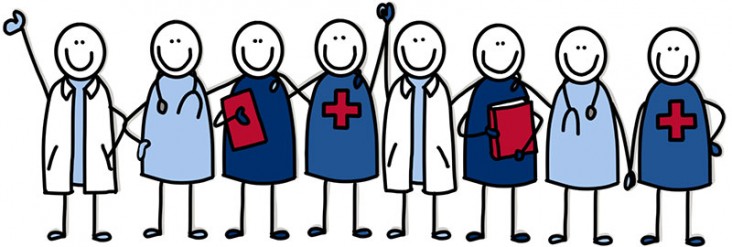- What We Do
- Agriculture and Food Security
- Democracy, Human Rights and Governance
- Economic Growth and Trade
- Education
- Ending Extreme Poverty
- Environment and Global Climate Change
- Gender Equality and Women's Empowerment
- Global Health
- Water and Sanitation
- Working in Crises and Conflict
- U.S. Global Development Lab

SPOTLIGHT
Digital Health: Moving from Silos to Systems
From health officers conducting contact tracing with mobile phones in Ebola-affected countries to TB patients using apps to fulfill their treatment regimen, digital technology is playing an increasingly central role in the way health workers reach patients.
Read the blog »
USAID has demonstrated a longstanding commitment to Human Resources for Health (HRH) by supporting countries in developing the sufficient, fit-for-purpose and fit-to-practice health workforce needed to achieve global health goals – including EPCMD, AFG, FP2020, PCID, and GHSA.
Demand for health care is projected to create around 40 million new jobs in the health sector by 2030. This takes place against deepening mismatches and global inequities with a projected shortfall of 18 million health workers; primarily in low and lower-middle income countries. USAID has been an active supporter of the development of the newly endorsed, Global Strategy on Human Resources for Health: Workforce 2030, ratified at the 69th World Health Assembly in May 2016. This Strategy addresses this global mismatch between supply and demand. The Strategy presents a multi-sectoral approach to leverage the health workforce as an engine for universal health coverage, global health security and for inclusive economic growth paving the way to reach our global health goals.
USAID’s continued investments in Human Resources for Health (HRH) are aligned with the new global HRH strategy in order to achieve our global health goals by focusing on:
- Increasing the utilization and efficiency of the workforce in service delivery
- Demonstrating socio-economic impact of investments beyond health gains, and production of cadres that meet the skill-mix needs for service delivery
- Working with country stakeholders and human resource managers to overcome recruitment, deployment, and retention challenges impacting service delivery
- Strengthening availability and utilization of HRH data for decision making for health, and investments in national human resource information systems and roll-out of WHO National Health Workforce Accounts
Increased HRH data availability and its utilization is key for achieving USAID health goals. USAID supports WHO in the development of the WHO National Health Workforce Accounts (NHWA) to create a harmonized, integrated approach for annual and timely collection of health workforce information, improve the information architecture and interoperability, and define core indicators in support of workforce policy and planning and global monitoring. The NHWAs were presented at the USAID supported Measurement and Accountability for Results in Health Summit in June 2015 and were integrated into the Five-Point Call to Action [PDF, 201KB]. USAID is working with countries to develop strategies to implement NHWAs to improve programming impact.








Comment
Make a general inquiry or suggest an improvement.